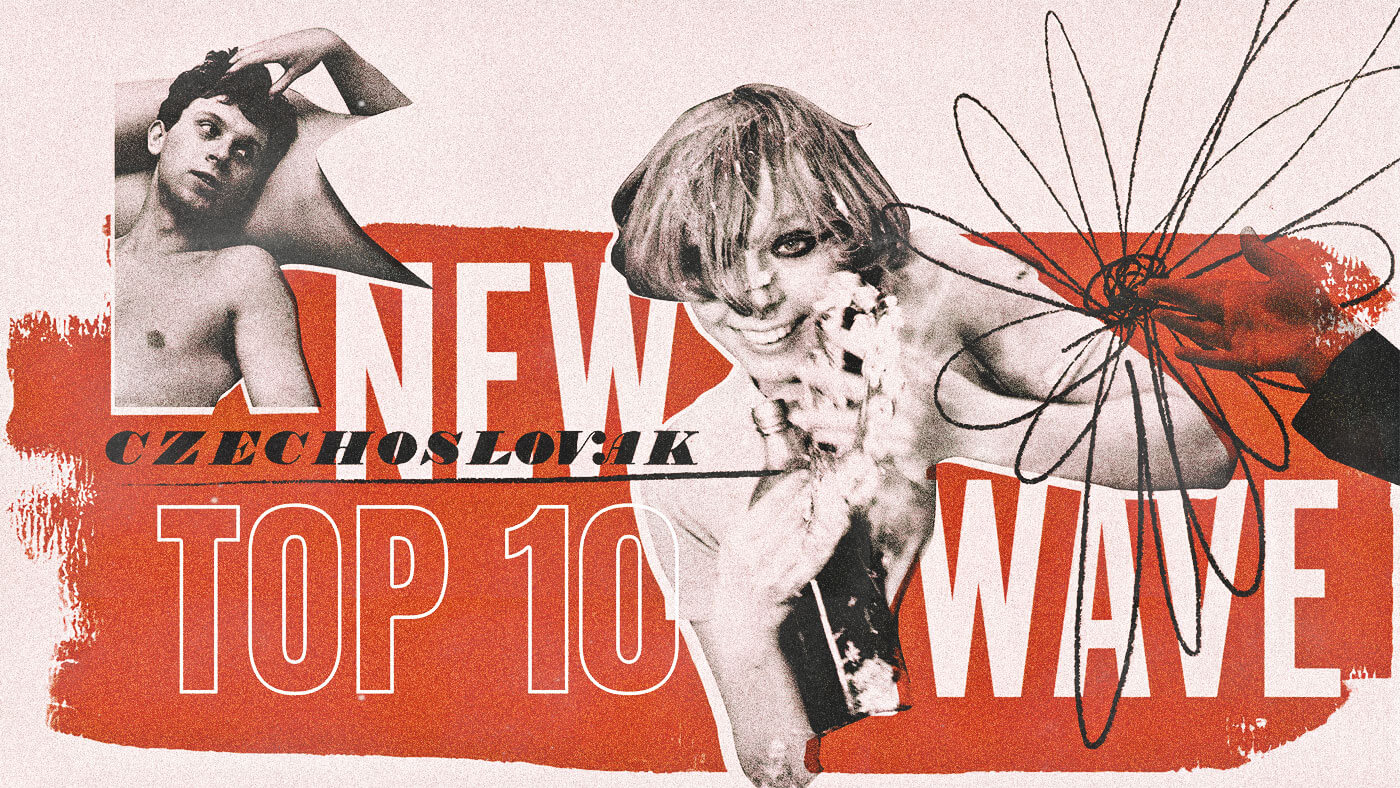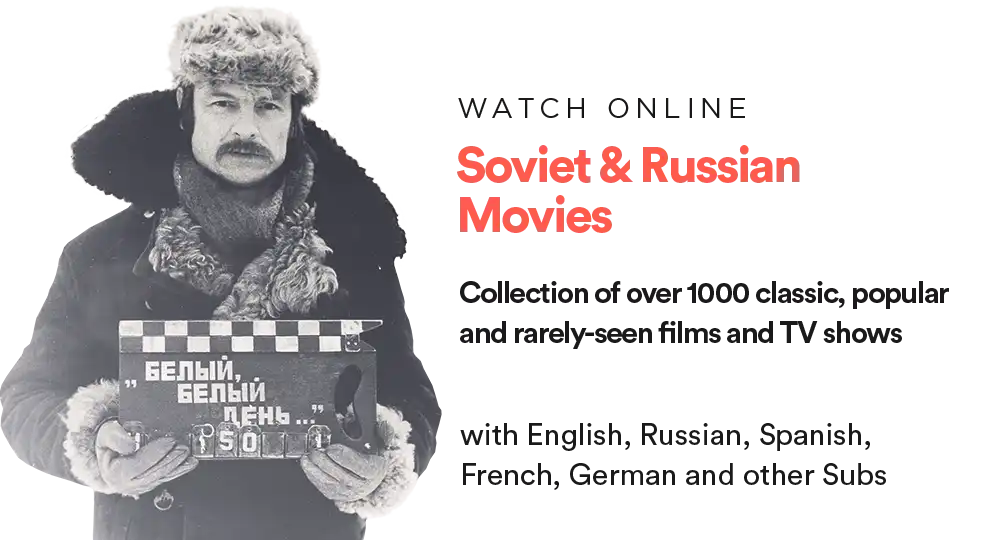The Top 10 Czechoslovak Films: A Look into Its Unique Cinematic History
16.06.2023

Czechoslovak cinema has played a unique role in the history of world cinema. Emerging from the cultural mosaic of Central Europe, it stands apart for its distinctive style, socially-conscious narratives, and impressive capability to balance between the aesthetics of Western cinema and Eastern (Soviet) ideologies.
The Uniqueness of Czechoslovak Cinema
Czechoslovak cinema significantly evolved throughout the 20th century, continuously blending the influences of socialist realism, Soviet control, and Czech and Slovak national culture. In contrast to the heavily censored Soviet cinema, Czechoslovak filmmakers often used satire, irony, and surrealism to provide coded criticism of the regime, exploring themes of individualism, humanism, and even counterculture, earning international acclaim and finding ways to bypass censorship.
Top 10 Czechoslovak Films
- Daisies (1966) — A daring, non-linear satire directed by Věra Chytilová, it is perhaps the most provocative film of the Czech New Wave. Its two female protagonists challenge societal norms in an outlandishly rebellious fashion, drawing heavy criticism from authorities but achieving a cult following.
- The Valley of the Bees (1968) — A medieval drama by František Vláčil, this film artfully explores themes of faith, duty, and personal freedom. Its striking black-and-white visuals and the stark, emotional portrayal of its characters have rendered it a classic.
- Cutting It Short (1980) — This delightful comedy from Jiří Menzel gives a whimsical and nostalgic view of rural life in early 20th-century Czechoslovakia. Its cinematography beautifully captures the idyllic setting.
- Alice (1988) — An imaginative adaptation of Lewis Carroll’s “Alice in Wonderland” by Jan Švankmajer, blending stop-motion and live-action, achieving a dark and dreamlike aesthetic. The director’s unique approach has made this film a cult classic.
- Valerie and Her Week of Wonders (1970) — Jaromil Jireš created this hauntingly beautiful blend of horror and fairy tale, which explores themes of coming of age and sexual awakening against a backdrop of surreal, dream-like imagery.
- Marketa Lazarová (1967) — Directed by František Vláčil, this film is often considered one of the greatest Czechoslovak films. A stark, violent medieval epic’s narrative structure and striking visuals have set it apart from other historical dramas.
- Ecstasy (1933) — This Gustav Machatý’s film is famous for being one of the first to include nudity and sex scenes, causing controversy at the time. Despite this, it’s a beautifully shot, groundbreaking film, with Hedy Lamarr in her first major role.
- The Firemen’s Ball (1967) — One of Miloš Forman’s best-known films, this comedy-drama is a microcosm of Czechoslovakia’s social and political situation during the 1960s. Its universal appeal and clever satire led to its nomination for an Academy Award.
- Dragon’s Return (1968) — This film by Eduard Grečner blends traditional folk storytelling with elements of psychological drama. It’s renowned for its atmospheric cinematography and strong performances.
- Lesson Faust (1994) — Another of Jan Švankmajer’s imaginative films is a bizarre and darkly humorous reinterpretation of the Faust legend. Blending live-action and stop-motion animation offers a unique and haunting cinematic experience.
Global Reception and Influence
Czechoslovak cinema has been recognized internationally for its unique blend of creative freedom and political subtext. It has been acclaimed for its ability to present humanistic stories with a touch of irony, humor, and surrealism; traits often considered distinct from Soviet and Hollywood cinema. Its influence on global cinema is evident, with filmmakers worldwide acknowledging the stylistic and thematic contributions of the Czech New Wave and its successors.

While Soviet cinema often adhered to the principles of socialist realism, with films serving as propaganda tools, Czechoslovak filmmakers managed to use their art as subtle social commentary, leading to a more nuanced cinematic language. On the other hand, compared to Hollywood, Czechoslovak cinema stood out for its gritty realism, profound thematic explorations, and avoidance of sensationalism or blockbuster spectacle.
Political Influence
The political landscape of Czechoslovakia significantly influenced its cinema. The Stalinist era (late 1940s to early 1960s) was marked by strict state control over film content. However, the period of political liberalization in the 1960s, known as the Prague Spring, allowed filmmakers to experiment with form and content, leading to the emergence of the Czech New Wave.
However, the subsequent Soviet-led invasion and the onset of “Normalization” led to renewed censorship. Many films were banned, and some filmmakers emigrated or ceased working. Despite this, Czechoslovak cinema continued to evolve, reflecting the country’s changing political and social conditions.
In conclusion, Czechoslovak cinema’s distinctive style and history remain a unique and significant part of global film heritage. Its top films are a testament to the creative spirit of its filmmakers, who managed to produce meaningful, artistic, and often groundbreaking work under complex political circumstances.
There are indeed other Czechoslovak films beyond the top 10 that deserve special attention due to their unique storytelling, directorial prowess and influence on both Czechoslovak and international cinema.

Other Noteworthy Czechoslovak Films
- Black Peter (1965): An early work by Miloš Forman, this film realistically depicts teenage angst and the absurdity of adult life through the eyes of a young protagonist.
- Love Between the Raindrops (1979): A touching romantic drama by Karel Kachyňa exploring the complexities of love, commitment, and societal expectations.
- Morgiana (1972): This psychological horror directed by Juraj Herz stands out with its haunting visuals and exploration of sibling rivalry and identity.
- The Shop on Main Street (1965): A poignant Holocaust drama by Ján Kadár and Elmar Klos, which won the Academy Award for Best Foreign Language Film.
- Beauty and the Beast (1978): A fantastical and visually stunning film adaptation of the famous fairytale directed by Juraj Herz.
- Carriage to Vienna (1966): Karel Kachyňa’s suspenseful war drama gives a nuanced portrayal of the human condition amidst the horrors of war.
- Closely Watched Trains (1966): This Academy Award-winning film by Jiří Menzel combines a coming-of-age narrative with a unique commentary on the absurdity of war.
- The Incredibly Sad Princess (1968): A charming musical fairy tale by Bořivoj Zeman, beloved by generations of viewers.
- Adelheid (1970): František Vláčil’s moving post-war drama explores guilt, desire, and the legacy of war in a fraught love story.
- Lemonade Joe (1964): A hilarious satirical western by Oldřich Lipský, which subverts the traditional Western tropes with its quirky humor and musical numbers.
- The Cremator (1969): Another masterpiece by Juraj Herz, this chilling horror film uses the backdrop of World War II to explore the nature of evil.
- Rose Tinted Dreams (1984): Karel Kachyňa’s exploration of the human psyche and dreamscape, imbued with elements of magical realism.
- My Sweet Little Village (1985): Jiří Menzel’s charming comedy-drama captures the spirit of rural life and community with humor and warmth.
- Birds, Orphans and Fools (1969): A surreal and avant-garde film by Juraj Jakubisko, portraying the chaos and senselessness of war.
- Witchhammer (1970): Otakar Vávra’s harrowing historical drama about witch trials in 17th-century Bohemia, which serves as a metaphor for political persecution.
- Oil Lamps (1971): Juraj Herz’s period drama explores love, class conflict, and societal conventions, featuring brilliant performances and cinematography.
- The Nun’s Night (1967): Karel Kachyňa’s psychological drama looks into the crises of faith and personal freedom within the oppressive structures of a convent.
- The Deserter and the Nomads (1968): A poetic war film by Juraj Jakubisko, symbolizing war’s destructive and absurd nature through three interconnected narratives.
Like the top 10, these films are significant in portraying the human condition, engaging with social and political themes, and innovative stylistic approaches.




